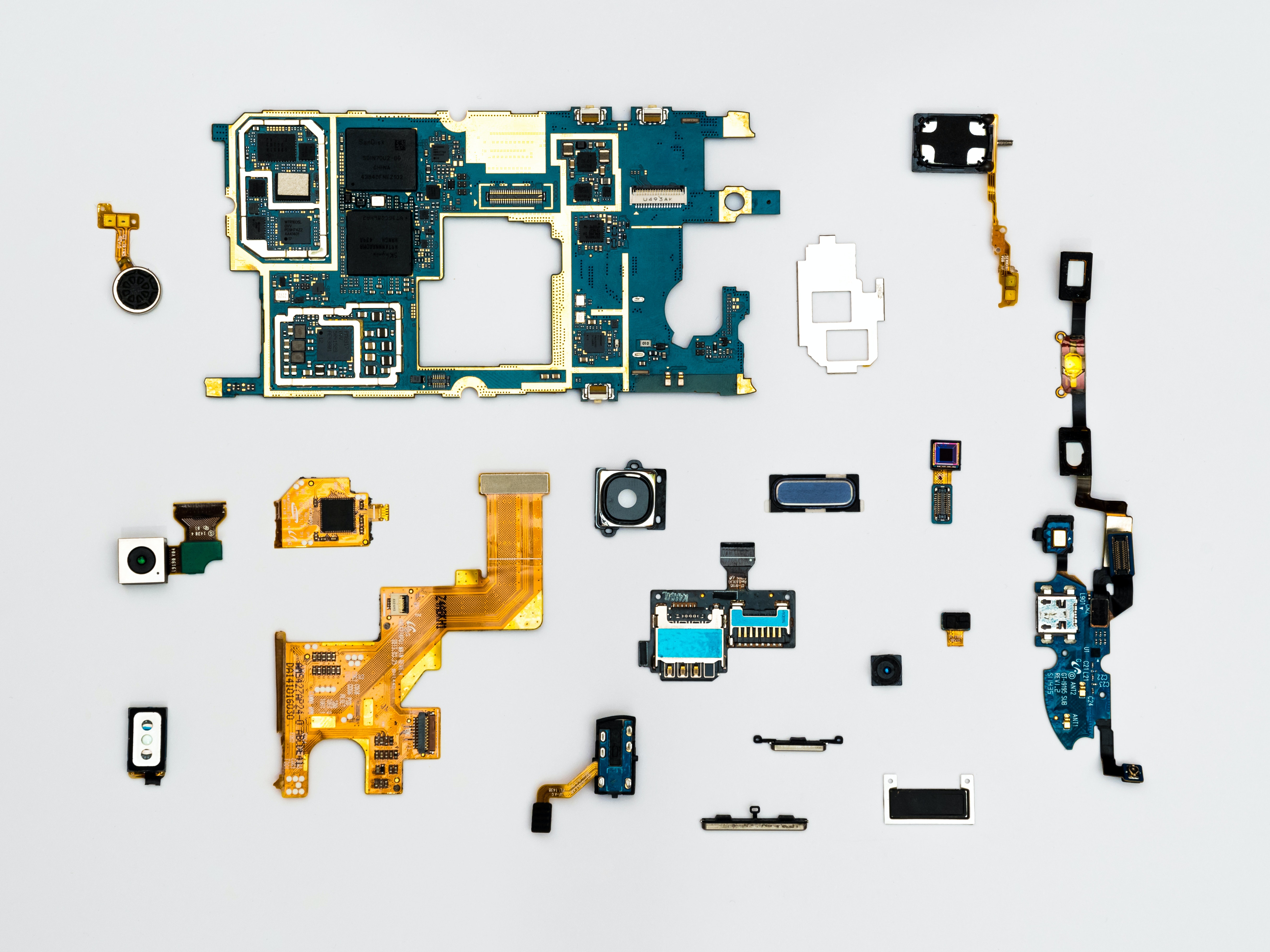Introduction
What is “Right to Repair”?
Currently, many electronics producers lock us out of their devices in the name of safety or because of copyright infringement – they argue that the devices they sell us are their own intellectual property, not ours. How do they do this? These OEMs (Original Equipment Manufacturers) have two major strategies: Withholding official repair manuals due to copyright, and software locks. If Tesla detects that you have tampered with one of their cars, for example, they will block you from receiving any software updates and potentially from their supercharger network. “Right to Repair” is a concept wherein these OEMs must provide a practical way for the end consumer to repair their own devices.
Why is it such a hot topic right now?
This debate is a hot topic due to a press release that was released by Apple outlining their plans to support third-party and self-service repair for the foreseeable future from the iPhone 12 and onwards. To say this is controversial would be an understatement; currently, rights groups are split into multiple camps – one that embraces this change as a massive positive for consumers, one that believes that Apple still isn’t doing enough to encourage repairability and that this press release was just a front to appease regulators, and competitors in the technology industry that worry about the future of electronics safety.
This article will explore the reasons for and against this movement from a consumer’s perspective and the validity of the arguments both sides give in the world of repairability.
Pro-Repair Perspectives
The People’s Choice
Many believe that Right to Repair is a good movement as it often encourages greater consumer choice. This is good as there are cases where having your device repaired costs even more than just buying a new or used one. This helps encourage pre-existing consumers to keep their devices and to cut down on the massive problem of e-waste. Right now, anyone that wishes to repair a simple component, like a screen on a phone, often only has three choices. They can either go for the extremely expensive first-party repair, buy an entirely new device, or void their expensive warranty by doing a third-party repair. However, none of these options seem great except for the first, which is an intentional decision – these companies restrict your options to boost their repair sales and therefore their bottom line at the cost of the consumer. Still, the best that they can offer is far from perfect, since your device may not be fixed completely. Furthermore, the entire process would be very time consuming as they would have to hold onto your device for several weeks at a time – can you imagine surviving a month without your phone, your method of communicating with others, working, and spending your free time? If we had the right to repair our own devices, millions wouldn’t be faced with such a dilemma on a daily basis.
We can attest to this personally. One of us had a MacBook, where the audio port would constantly fail. This left me unable to use my Mac’s sound features, and my Mac would constantly be in the shop for first-party repairs. I was lucky enough to be covered under warranty, though if I wasn’t, I wouldn’t want to know how much all those repairs would’ve cost.
Pricing
Right To Repair also helps to exponentially lower the price of repairs that many consumers may have to pay when their devices do eventually break. Rather than having to pay for the broken chip itself, as many devices often have a single fault point that occurs more often than others, manufacturers require us to pay for the whole replacement board. This can often drive up the price from just hundreds of dollars to multiple thousands of dollars. Furthermore, there are cases where there are components that are not even covered under your warranty, meaning that despite having to pay a premium on your device for that warranty you may still end up having to pay for a replacement board.
There is also the issue of price gouging within the first-party repair industry, as most first-party repair shops often charge ludicrous amounts for a repair. There have even been cases where official Apple Repair services were caught selling repair services that wouldn’t even have worked.
There is also the case of Apple Repairs being hideously time-consuming. The “Genius Bar” will often have you book in advance, though this is always full. Additionally, when you attempt to do a walk-in repair, they will make you stand for possibly an hour and also take a while “repairing” the device.
If consumers were instead given the right to repair their own devices, they would be able to take matters into their own hands and purchase only the things they need for their repairs, saving thousands of dollars, several hours and preventing scams. This is why we believe in the Right to Repair.
Anti-Repair Perspectives
Component Sizes
We’ve potentially hit a point where we end-users don’t even have the capability to repair our own devices. This is because the parts themselves get smaller and smaller every year – CPUs, for example, have shrunk to the point where individual transistors are only ~50 nanometres (nm) wide. For comparison, a mere atom has a radius of 0.1 nm. Technology has progressed to the point where logic gates, decision-making circuits that make up nearly every single part of a computer, are closer in size to fundamental particles than they are to human hairs! As these parts have decreased in size, they have been integrated together. Many controllers are soldered onto a single board nowadays, and the company that produced your device will often have to desolder them to complete specific repairs, which most ordinary people simply can’t do. Let’s consider a different example, like the flexible cables within our phones. Unless these are handled with the utmost care and delicacy, they may fray and force you to replace more parts than even necessary. Even if we did have access to repair tools, the argument goes, it wouldn’t have made a difference.
However, there is a case to be made that third-party shops that do have the ability and resources and so should be allowed to do these repairs without facing any consequences from the manufacturer of the product – after all, if the shop is experienced enough, it will likely do as good a job, and shouldn’t be prevented from having the same access to parts. Additionally, the extra competition would incentivize the company to lower their prices and ultimately benefit the consumer. Still, the original manufacturer can argue that since they can’t supervise such shops, the quality of a repair cannot be guaranteed and its brand reputation may be ruined.
Safety
Batteries are another major problem impeding the advancement of Right to Repair. We naturally tend to buy cheaper, lower-quality alternatives, but beware when battery shopping, because a poor module could cause big problems. If your battery isn’t made well enough, you could either waste your money on a brick in the best case or end up as yet another exploding battery headline in the worst. Most phones and laptops, for instance, have chips that detect the amount your device has charged to regulate current and therefore protect against overcharging, so you’ll be safe even if you charge your devices overnight, but this guarantee never applies to third-party cells. Additionally, bad-quality cells may overheat faster and degrade quicker. Thus, OEMs tell us that if we were to modify our devices ourselves without consequence from them, we would suffer more.
Solutions
This is why when we talk about Right to Repair, we ask for first-party manufacturers to give us their own parts and documents. If Samsung, for instance, decided to give us their official components instead, we wouldn’t have to deal with scavenging for good third-party alternatives, and safety would be a non-issue. Restriction to prevent the consumer from harm should then, therefore, be a non-argument. No one should be expected to pay a service charge in the thousands in the name of protection, especially professionals with the means to actually repair the device as well as the company itself.
And although companies like Apple have taken a step in the right direction by offering tools to repair some of the most common hardware issues such as screen and battery repairs, there’s still much to be desired. Namely, the company has currently limited this program only to the latest iPhones and Macs (although this will presumably change in the near future), and has complete discretion over the third-party repair shops it will give these components to.
Conclusion
Sometimes, we simply must sacrifice repairability in order to create better products. Displays are glued onto their chassis so that we can enjoy thinner devices, and many ports sealed for waterproofing. If we were to force OEMs to improve the repairability of their devices, we would regress technologically by years. Moreover, this may lead to more expensive phones, laptops, and computers. In some cases, as with Bluetooth earphones, this is downright impossible. Therefore, consumers will always be prevented from completing some repairs. Having said that, this isn’t such a black-and-white issue – there is a balance to be struck between improving the ease of repair and sacrificing design; a compromise can be reached between repairability and functionality. This, as mentioned above, will result in dramatic price decreases for consumers, and, more importantly, expand the choices available to them. Instead of relying solely on first-party repairs, we will be able to repair our own devices and save both our own money and the environment.
Akshat Gupta
Akshat primarily writes for the Science column, but dabbles in Arts and Culture sometimes. Outside of Island Currents, he likes to play bullet and blitz chess and watches TV late at night even though he really should be asleep. He doesn’t read his email, so you can reach him via WhatsApp or Discord.
Colby Ho
Colby is interested in all things tech-related which is visible in the articles that he writes.









